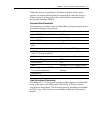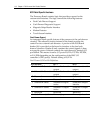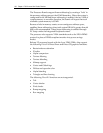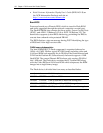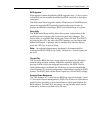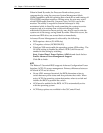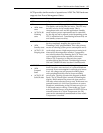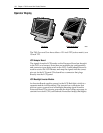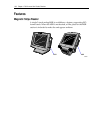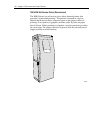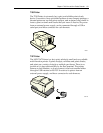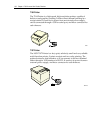
Chapter 1: 7401-2xxx and 3xxx Product Overview 1-25
ACPI provides similar modes of operation as APM. The 7401 hardware
supports four Power Management States.
State Characteristics
OFF AC power is not present. All RAM contents are lost.
ON
• APM Auto
state
• ACPI G0/S0
Working
state
Power is on and fully supplied to all 7401 components.
The display and touch panel are active. The CPU may
be fully on or be in chip standby mode. This is
transparent to the user and the application. Standby
mode reduces power requirements and is controlled
by the chip set and is entered/exited depending on the
CPU’s utilization level. Transitioning between fully on
and standby causes no delay.
CONSERVE
• APM
Standby state
• ACPI G1/S1
Sleeping state
Power is on, but consumption is reduced by throttling
back or completely stopping the system clock.
Throttling is fully programmable. This is the primary
means of reducing system power consumption and is
used to help correct a high temperature warning level
detected by the temperature monitor. Temperature
may also be reduced by dimming the LCD. There is no
user or application action required for this mode.
When a Safe Temperature is detected, the system
switches back to the ON state. Transitioning between
ON and CONSERVE takes less than 10 milliseconds.
SOFT OFF
• APM
Suspend
State
• ACPI G2/S5
Soft Off state
Temperature has reached a critically high level, a LAN-
based Powerdown was received, or a system Shutdown
occurred. Power consumption is reduced to its lowest
level. All voltages are still present, but BIOS places
each peripheral and chip into its lowest available
power state. The chip set enters the Suspend-to-RAM
mode. The LCD back light is turned off, blanking the
display. RAM contents are preserved upon return to
ON state unless software issues a reset. If this state was
entered because of a LAN-based Powerdown or system
Shutdown, transitioning to the ON state can occur via
LAN-based reset or wakeup, Timer wake-up, Touch
activity, Motion Sensor, or keyboard. If SOFT OFF was
entered because of a Critical Temperature, the ON
state can be automatically transitioned to when a Safe
Temperature is reached.



